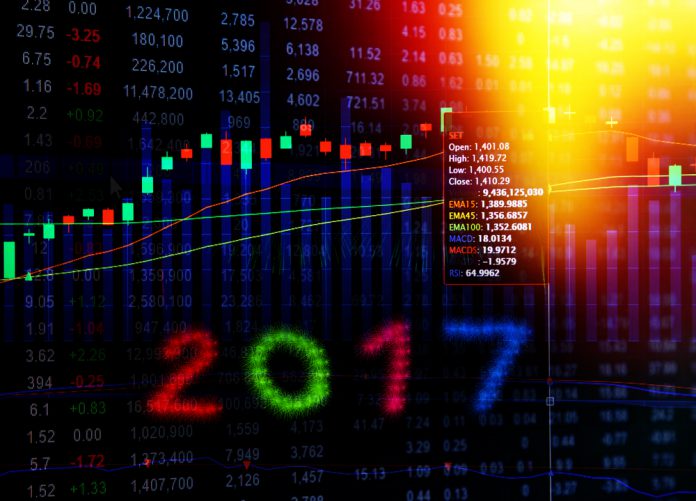Brexit
The most obvious factor to watch in the New Year is, of course, the word on everyone’s lips: Brexit.
The effect of June’s vote to leave the European Union on the pound means the FTSE has soared to record highs. Many companies on the FTSE 100 make money abroad, meaning the weaker pound has boosted their earnings; at the time of writing, the FTSE is on track for its tenth day on a winning streak. But will the FTSE continue to rise in 2017, or has it peaked too soon?
The pound sunk further again over the weekend as Theresa May warned that a ‘hard Brexit’ may be on the cards. Jordan Hiscott, chief trader at Ayondo markets, says: “If it looks like we are headed for a so-called hard Brexit, this will lead to a weaker pound, which will boost the profits of many FTSE international companies and push the market higher. I think the FTSE could reach 7500.”
The pound will likely remain volatile as negotiations begin from March of this year, having a direct effect on British stocks. Banking stocks in particular will find themselves at risk of a rocky year, as investors gamble on whether or not the UK will keep its European passporting license once it formally withdraws from the European Union.
Justin Urquhart Stewart, founder of broker Seven Investment Management, says: “It’s getting more and more likely that the market has peaked.”
“I think there will be a significant pull-back in share prices this year. I just don’t know when”, he added.
Trump
What the effect of Trump’s leadership will be has proved to be a divisive topic. His business-friendly approach to taxes may well benefit many large companies – that is, of course, if he can pull them off. His lack of experience and coherent strategy to put his rhetoric into action has left many uncertain as to just how constructive his policies will be.
David Buik, chief market commentator at Panmure Gordon, believes Trump’s policies may well “have positive effects on the US economy, driving up growth above 2 per cent thanks to infrastructure spending and taxation cuts.”
However, he added: “there is a concern that repatriated corporate funds, squirreled away for so many years, could well find their way in to shareholders pockets rather than wage increases.”
The S&P 500 has climbed since the surprise election of Donald Trump on November 11th 2016, showing that US investors, at least, have confidence in Trump’s potential.
In Europe, key elections in France, Germany and The Netherlands are likely to have a knock-on effect on the markets. If the votes follow the populist trend of 2016, uncertainty for the future of the European Union and/or the single currency is likely to have a negative effect on stock indexes globally.
Oil
Mining companies had a rough year in 2016, with oil prices around the $30 a barrel mark this time last year. However, after record lows for the oil industry prompting major firms to begin selling off assets, it seems the only was was up; shares in the mining sector were some of 2016’s biggest gainers. So what lies ahead for the New Year?
An output agreement between both OPEC and non-OPEC member countries has held oil prices steady over the last couple of weeks, but experts are unsure how long the agreement will last. Years of tension between Saudi Arabia and Iran mean the deal was signed on rocky ground, but the mutual benefits of limiting output for the countries may ensure the agreement sticks.
There is some positivity in the effectiveness of the agreement, with James Moore, chief business commentator at The Independent, saying that “Opec’s production cut and similar action by others should hold for most of the year, keeping oil prices steady, if not buoyant.”
Mining giants such as Glencore make up a substantial part of the FTSE 100 and can have a significant effect on the fortunes of the blue chip index. Thus far oil prices are off to a positive start, with WTI Crude currently up 0.91 percent at $51.28 per barrel and Brent Crude up 1.14 percent at $54.25.

